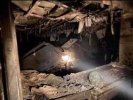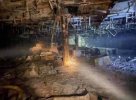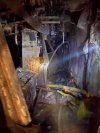This doesn't attack the root cause of the fire. This incident can happen regardless of who is responsible.
I agree from a QOL and training perspective that the USCG model would be better in drydocked availabilities lasting more than 12 mo. However, it would require a LOT more EDOs and shore side sailors that the Navy doesn't have. And if you haven't paid attention lately, the Navy just cut BAH and retirement benefits last decade, so I don't think there's an appetite to increase spending on manpower. Additionally, from a practical perspective, the yards are already primarily responsible for the safe execution of the work package.
But this fire happened pier side during an I or A-avail, so all of that is moot.
We have plenty of underutilized EDO Reservists who would be perfect to manage these availabilities. Also, the work would need to be spread out to shipyards around the country (not just in fleet concentration areas) which would help with our crumbling industrial base. If we also pushed ships through more frequently and kept the work constant, we could shift our contract model to something more akon to IDIQ which would allow the contractors to actually invest in quality personnel who take more personal investment in the work and aren't constantly having to worry about layoffs and droughts of work. This would also allow us to get ships into the yards more frequently so that we do smaller work more often instead of running ships to the point where we have to do 12 or 18 month availabilities because the ship just can't keep going any longer without maintenance. This reduces risks, allows us to better forecast work, makes the yards more flexible, and allows a more incremental approach to lifecycle management.
Nothing really changes for surface ships whether the maintenance happens pierside or in a dry dock. Since the public shipyards are reserved for nuclear work, non-nuclear ships rely upon commercial yards and contractors to perform the work and set the proper watches.








